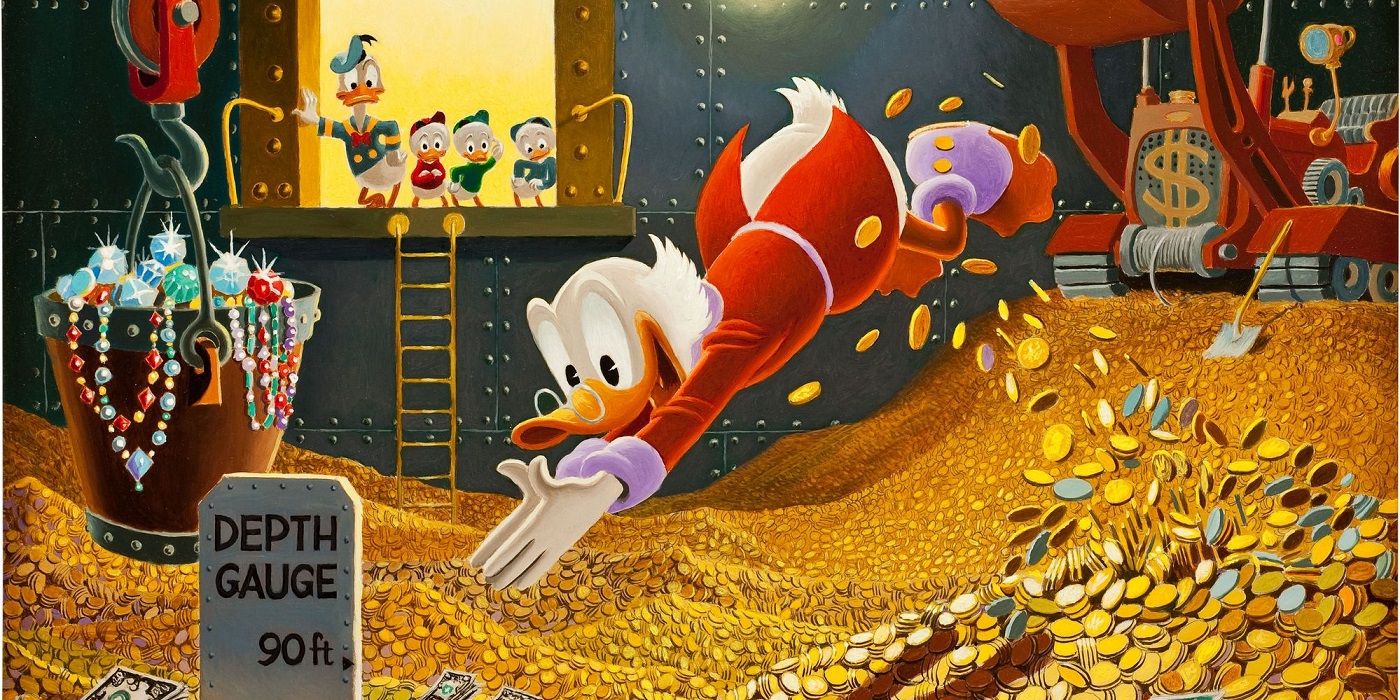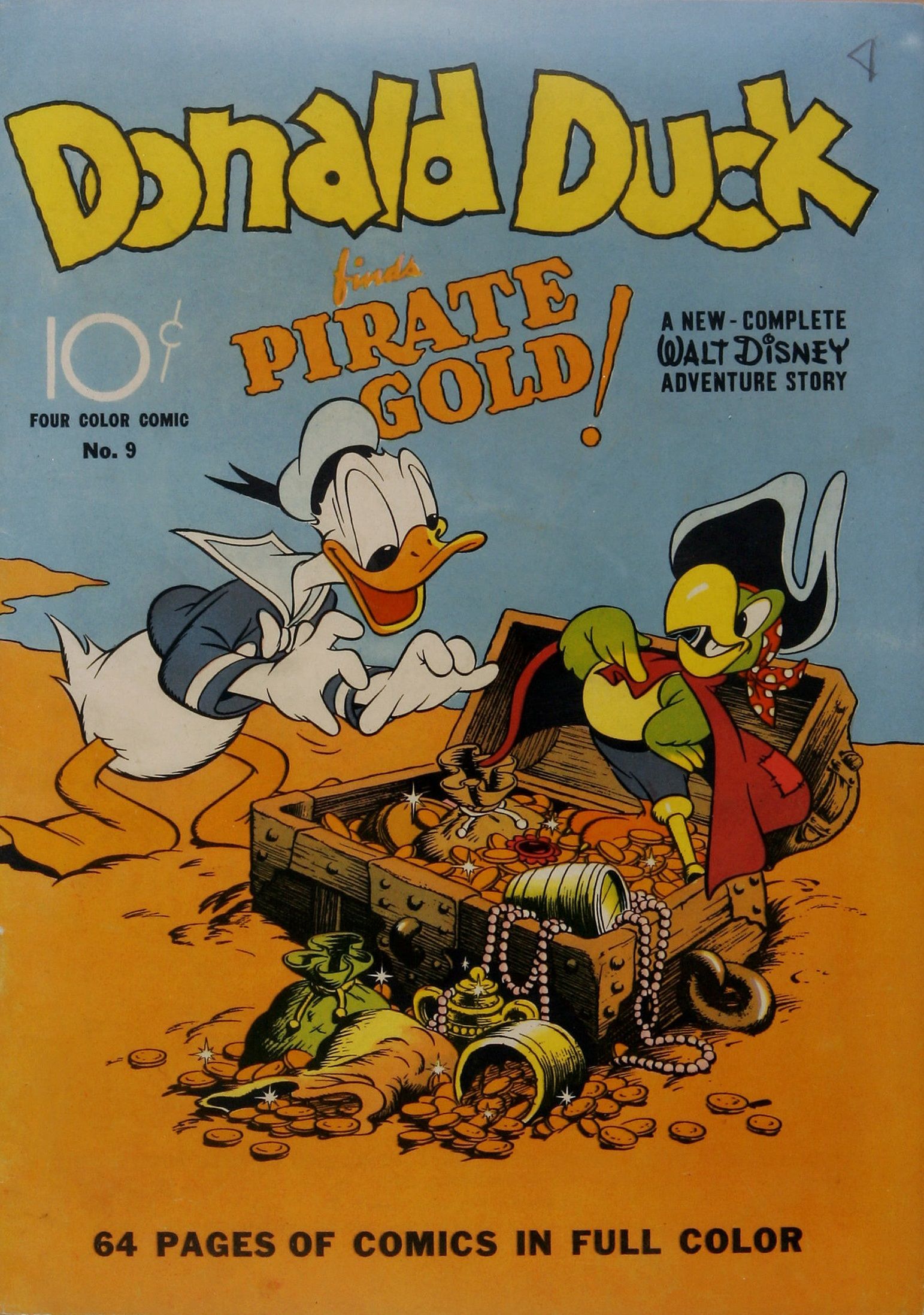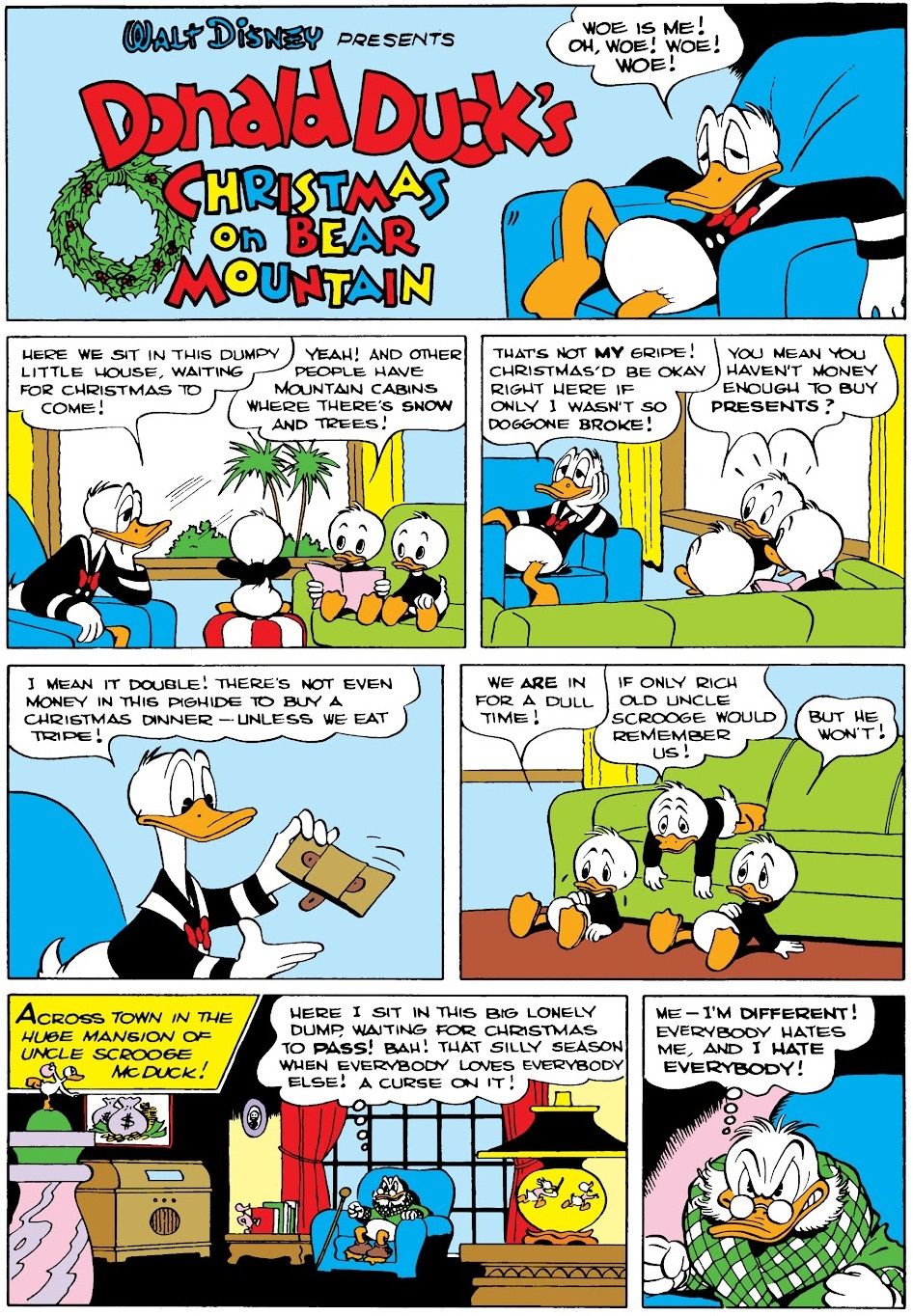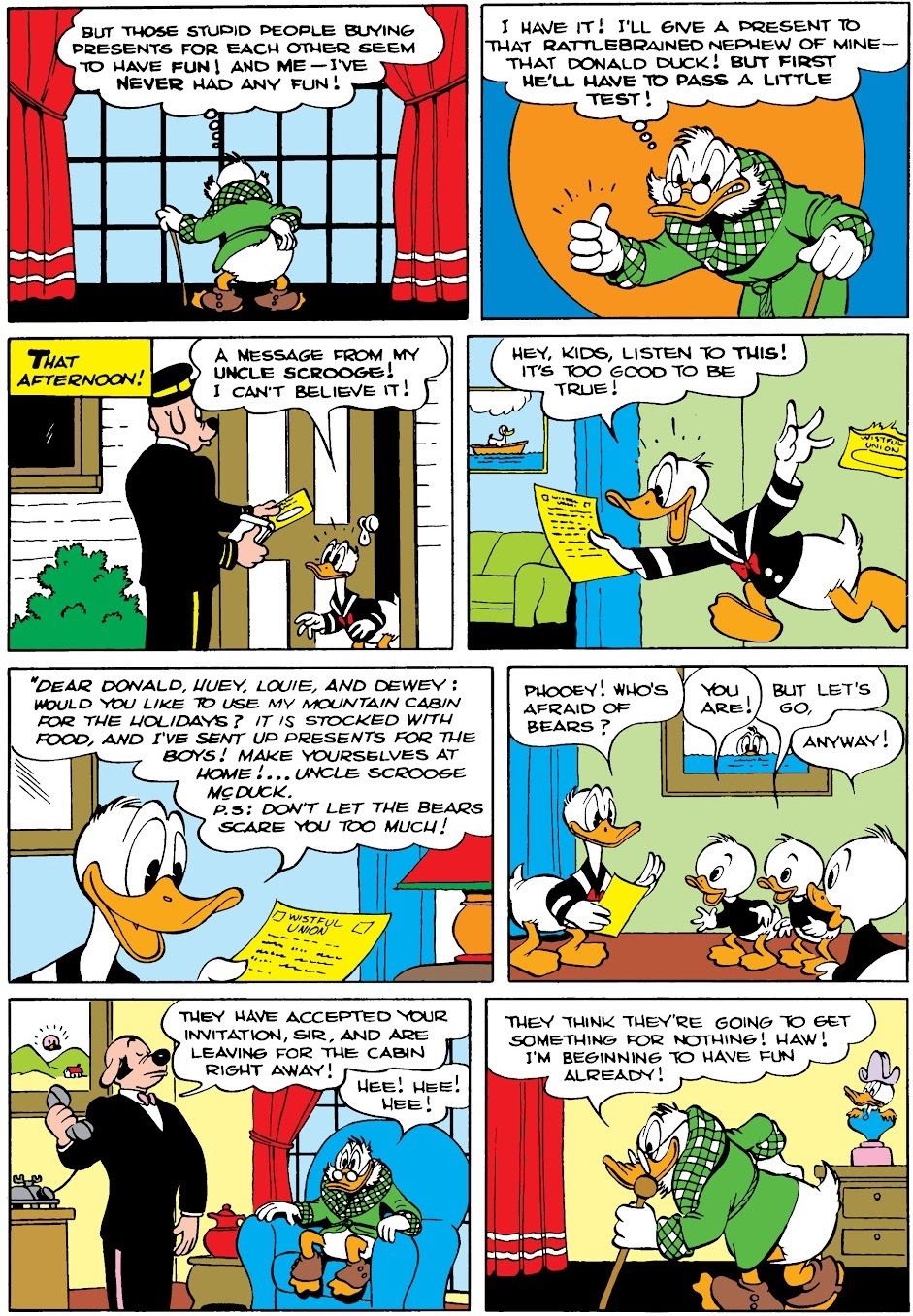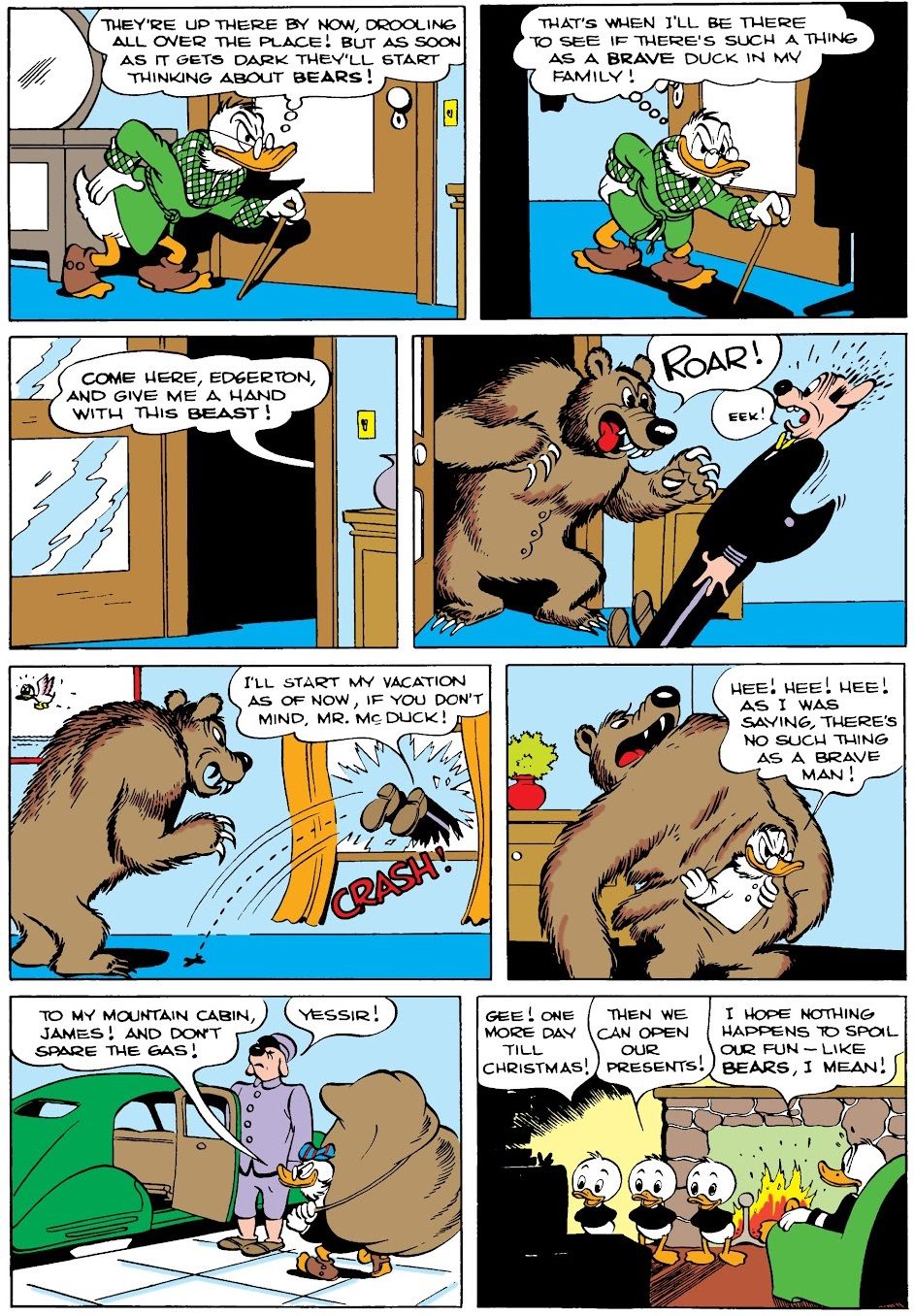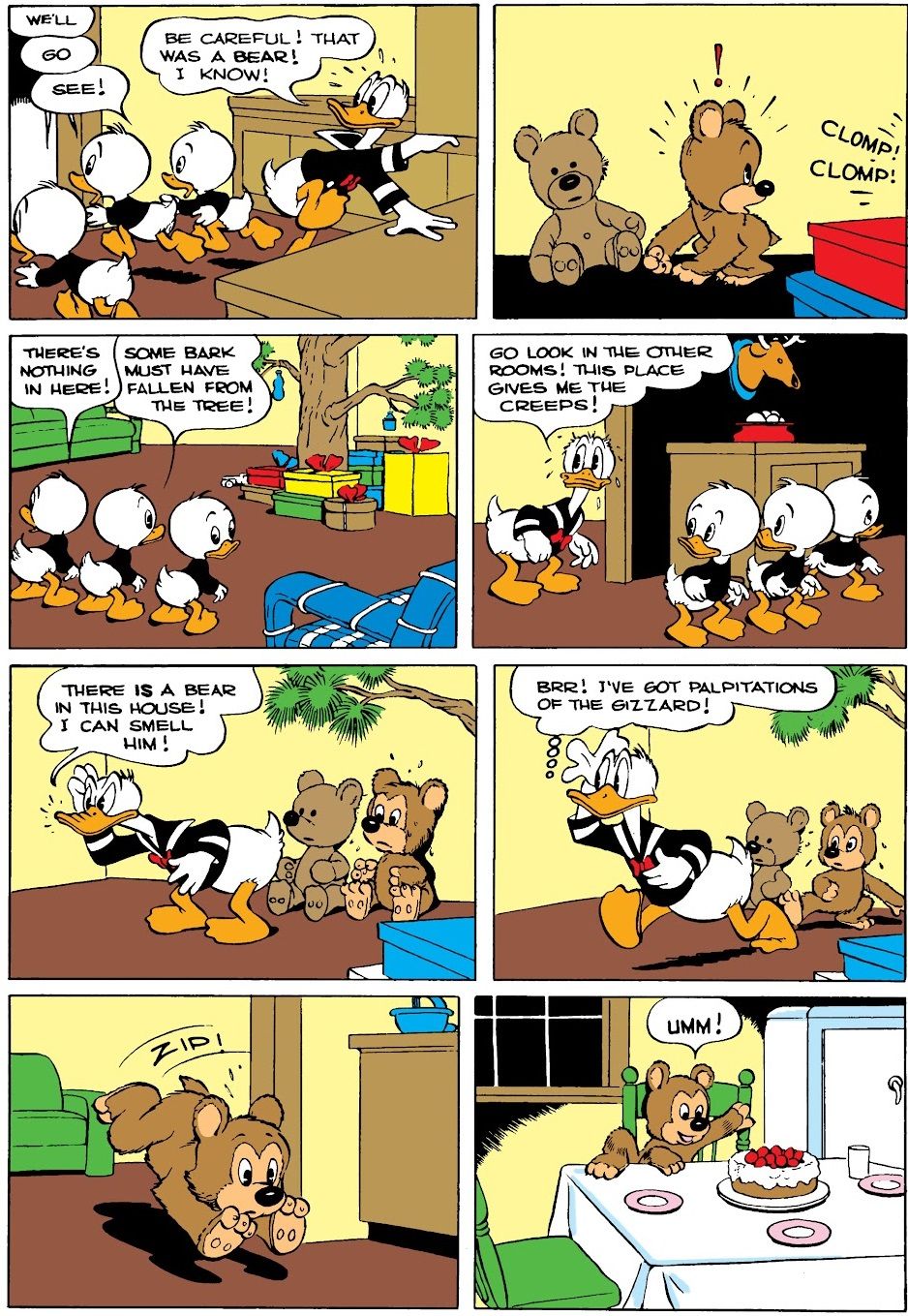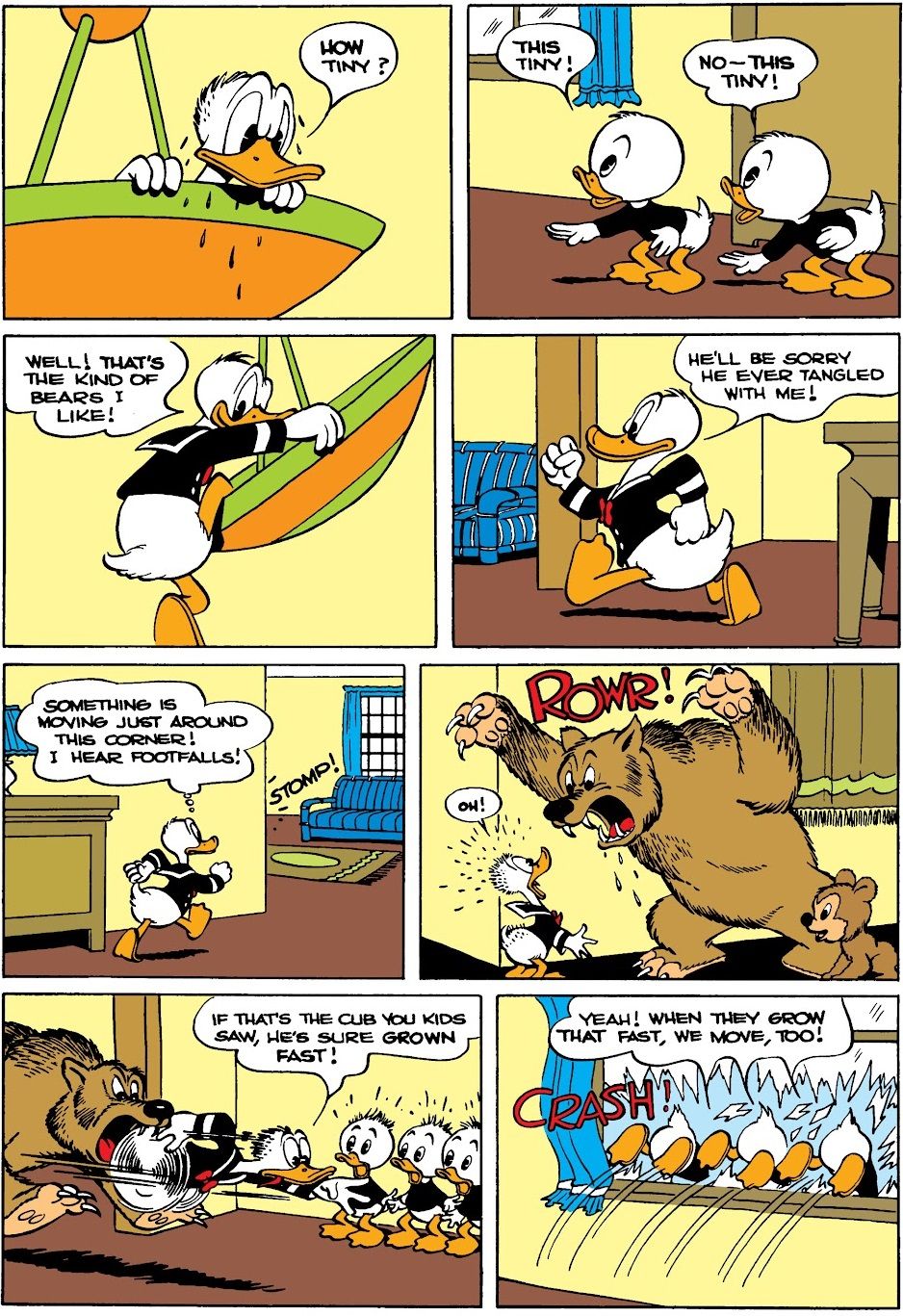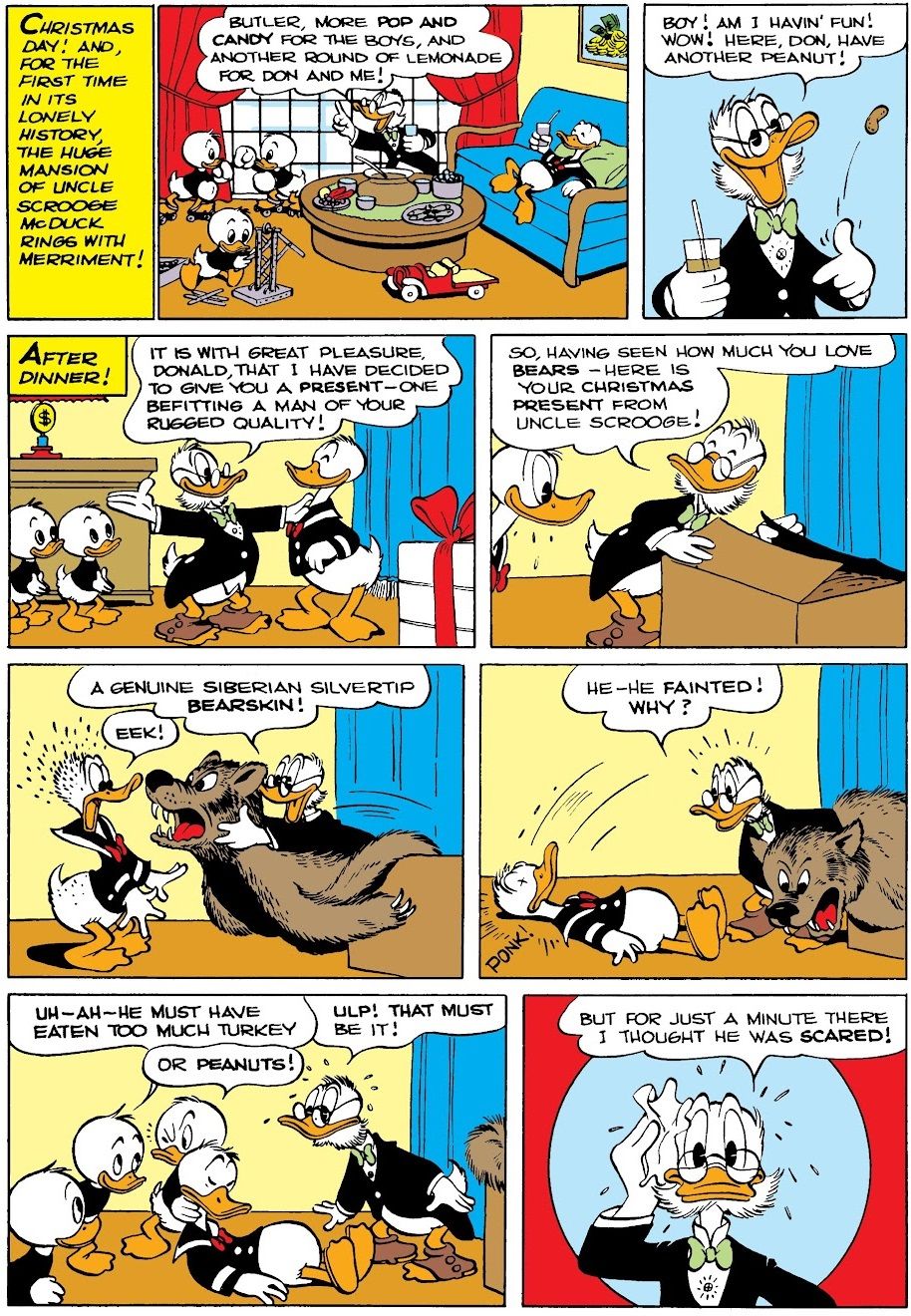Today, we head back 75 years ago, when Uncle Scrooge McDuck made his comic book debut...at least a version of Uncle Scrooge, that is
This is "Look Back," where every four weeks of a month, I will spotlight a single issue of a comic book that came out in the past and talk about that issue (often in terms of a larger scale, like the series overall, etc.). Each spotlight will be a look at a comic book from a different year that came out the same month X amount of years ago. The first spotlight of the month looks at a book that came out this month ten years ago. The second spotlight looks at a book that came out this month 25 years ago. The third spotlight looks at a book that came out this month 50 years ago. The fourth spotlight looks at a book that came out this month 75 years ago. The occasional fifth week (we look at weeks broadly, so if a month has either five Sundays or five Saturdays, it counts as having a fifth week) looks at books from 20/30/40/60/70/80 years ago.
This time around, we look at November 1947's Four Color Comics #178, where Carl Barks introduced the world to Uncle Scrooge McDuck...well...sort of.
HOW LONG HAD CARL BARKS BEEN CREATING DONALD DUCK COMICS BY THIS POINT?
A recurring theme I return to when I discuss the Golden Age of comic books is the importance of newspaper comic strips. They were ubiquitous in the late 1930s/early 1940s and most comic book creators really would have MUCH preferred to have been a comic strip creator. For instance, while Jerry Siegel and Joe Shuster were happy that their Superman character became a comic book star, they were OVERJOYED when Superman made the move to a syndicated comic strip. Similarly, Bob Kane gave up doing comic book work when Batman received a comic strip in the 1940s (and when that strip ended, Kane never really recovered, and eventually just started paying other artists to do ghost his comic book work for him).
Thus, when Western Publishing (who would create the comic books that would be published by Dell Comics) got into Disney comics, it was all about reprinting Disney newspaper comic strips into comic book form. By the early 1940s, though, Western realized something - they were starting to run out of Disney comic strips to reprint! They were going to have to come up with some original Disney content to meet the high demand for Disney comic books. In 1942, the West Coast editor for Western, Oskar LeBeck, was given permission to examine Disney's archives for ideas for original comics (Western had already begun to do a few original comics, such as Carl Barks' first ever comic book story, Pluto Saves the Ship, in Large Feature Comics #7).
As I noted in an old Comic Book Legends Revealed, he found an almost fully complete cartoon, so he hired Bob Karp, who was contributing to the Donald Duck comic strip at the time, to write a script based on the story. Animation studio partners Carl Barks and John Hannah were recommended to do the art, and so, in 1942's Four Color Comics #9, we saw "Donald Duck Finds Pirate Gold," Carl Barks' FIRST Donald Duck comic book story!
Well, soon after this story was finished, Barks decided to quit working for Disney, citing unsuitable working conditions (including the air conditioning being bad for his a sinus condition). He planned to start farming instead, but he asked Western if they needed any more stories and, well, they obviously did, so Barks then spent the next few decades of his life steadily working as the most acclaimed Disney comic book artist of all-time.
By 1947, he was already a steady contributor of Disney comics, mostly Donald Duck stories.
HOW WAS UNCLE SCROOGE INTRODUCED?
Famously, it all came down to a bear. Barks had an idea for having Donald Duck run afoul of a bear while in a mountain cabin, but he had to come up with a way to get Donald and his nephews (Huey, Dewey and Louie) TO the mountains, and so he came up with the idea of them visiting a miserly old relative named Uncle Scrooge McDuck. The Uncle Scrooge of this comic, though, is a SUPER miserly duck...
He is a joyless, well, you know, Scrooge, who suddenly has the idea of using his shiftless nephew, Donald, for some amusement. He invites him to stay in his remote mountain cabin for the holidays...
and then proceeds to show a bear costume that he plans on using to scare Donald, as a "test" to see if he is worthy of a Christmas present...
Meanwhile, an adorable baby bear has broken into the cabin, and hijinx ensue for a little bit...
Donald decides to confront the bear, not knowing that its adult mother has now entered the fray, and Donald unexpectedly finds himself confronting a giant bear!
Scrooge, of course, happens to see this and is shocked by his nephew's bravery, so he decides that the test has been passed with flying colors and he gives them a great Christmas celebration...
Now obviously, as you can see, Scrooge was just a plot device for this one comic book, and he was basically a villain, but Barks ended up being intrigued by the character enough (and just a fan of continuity in his comics anyway) that he began to bring Scrooge back, but eventually mellowed him out and made him more of an adventurer and soon we had the Uncle Scrooge that we all know and love (and that was the inspiration for DuckTales).
If you folks have any suggestions for December (or any other later months) 2012, 1997, 1972 and 1947 comic books for me to spotlight, drop me a line at brianc@cbr.com! Here is the guide, though, for the cover dates of books so that you can make suggestions for books that actually came out in the correct month. Generally speaking, the traditional amount of time between the cover date and the release date of a comic book throughout most of comic history has been two months (it was three months at times, but not during the times we're discussing here). So the comic books will have a cover date that is two months ahead of the actual release date (so October for a book that came out in August). Obviously, it is easier to tell when a book from 10 years ago was released, since there was internet coverage of books back then.

